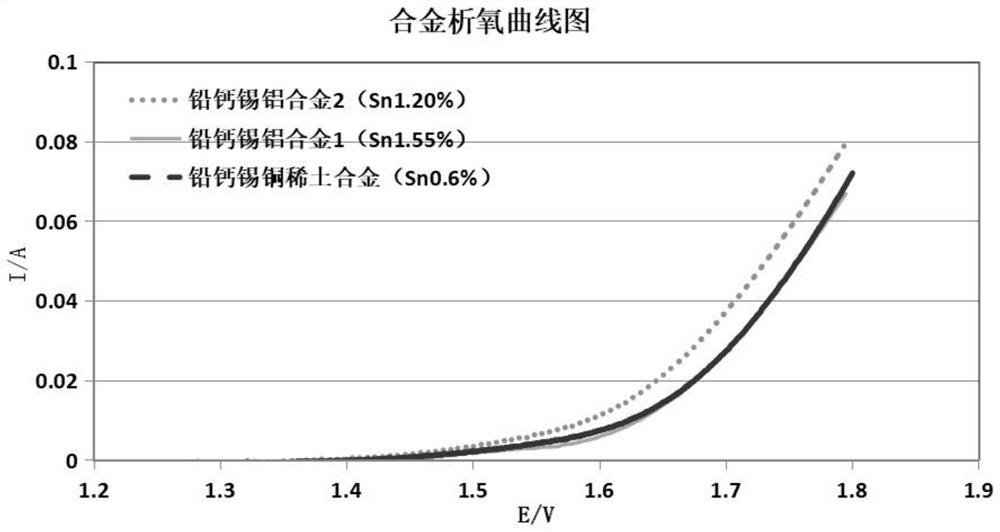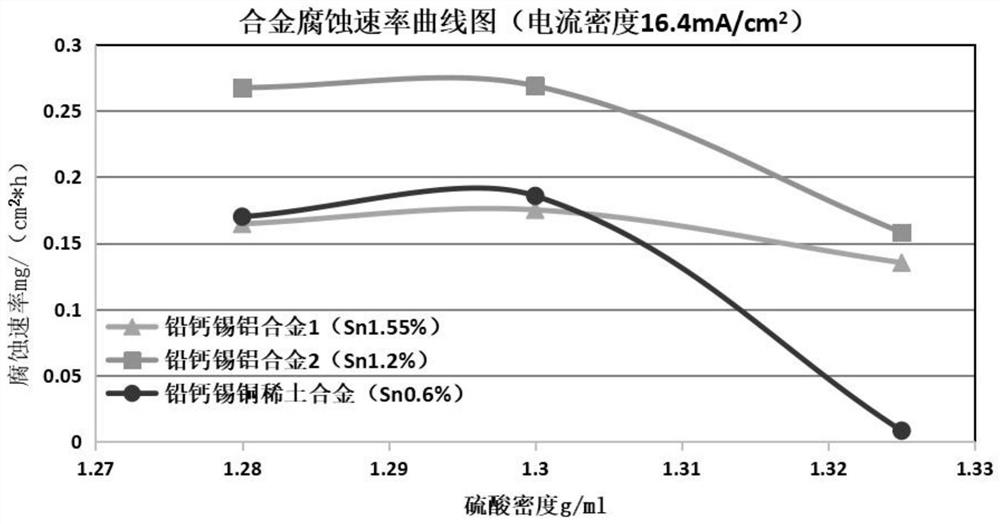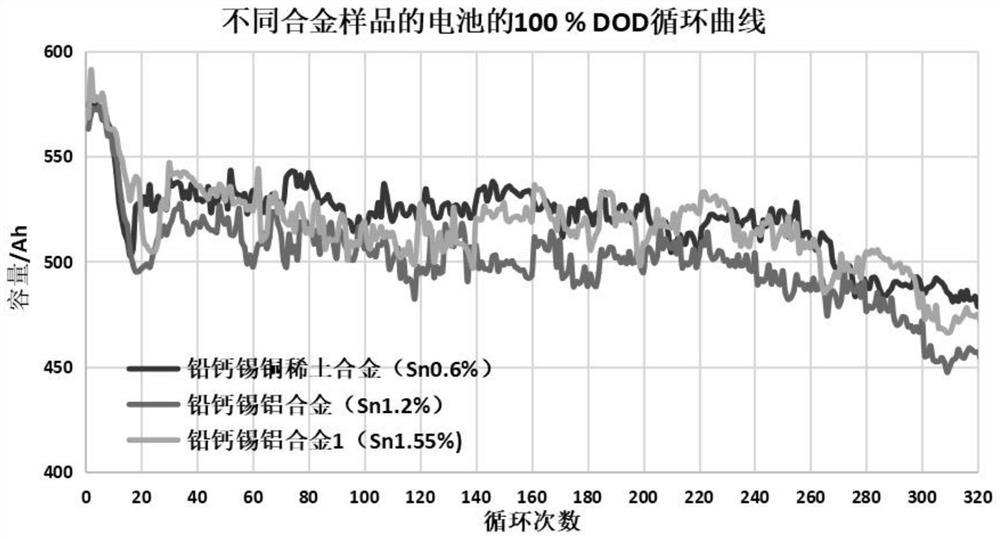Lead-calcium-tin-copper rare earth grid alloy, positive grid and lead-acid storage battery
A technology of lead-acid batteries and rare earth alloys, which is applied in the direction of lead-acid batteries, battery electrodes, electrode carriers/collectors, etc., and can solve the problems that the grid is easy to prolong the battery life, hinder the normal charging and discharging of the battery, and affect the cycle performance of the battery. , to achieve good deep cycle performance, improve deep cycle performance, and reduce production costs
- Summary
- Abstract
- Description
- Claims
- Application Information
AI Technical Summary
Problems solved by technology
Method used
Image
Examples
Embodiment 1
[0032] The alloy includes the following components: 0.553% calcium; 1.55% tin; 0.0202% copper; 0.0229% lanthanum and the balance lead. The raw lead used in this implementation case is electrolytic lead with a material purity not lower than 99.994%, and the copper raw material is electrolytic copper with a purity not lower than 99.9935%.
[0033] Copper rare earth master alloy preparation: Add 35kg of electrolytic lead into the intermediate frequency furnace, melt it into lead liquid at 450°C, continue to heat up to 800-1100°C, remove scum and add 5.05kg of electrolytic copper and 5.725kg of lanthanum respectively according to the formula, and continue to stir Make it reach a eutectic state, then add 15kg of electrolytic lead, and slowly lower the temperature to about 600°C to cast ingots.
[0034] Preparation of lead-calcium-tin-copper rare-earth alloy: Add 35kg of electrolytic lead to the lead pot, melt it into lead liquid at 450°C, raise the temperature to 600-850°C, add 0.2...
Embodiment 2
[0040] The alloy includes the following components: 0.553% calcium; 1.55% tin; 0.0202% copper; 0.0229% cerium and the balance lead. The raw lead used in this implementation case is electrolytic lead with a material purity not lower than 99.994%, and the copper raw material is electrolytic copper with a purity not lower than 99.9935%.
[0041] Copper rare earth master alloy preparation: Add 35kg of electrolytic lead into the intermediate frequency furnace, melt it into lead liquid at 450°C, continue to heat up to 800-1100°C, remove scum and add 5.05kg of electrolytic copper and 5.725kg of cerium respectively according to the formula, and continue to stir Make it reach a eutectic state, then add 15kg of electrolytic lead, and slowly lower the temperature to about 600°C to cast ingots.
[0042] Preparation of lead-calcium-tin-copper rare-earth alloy: Add 35kg of electrolytic lead to the lead pot, melt it into lead liquid at 450°C, raise the temperature to 600-850°C, add 0.2765kg ...
Embodiment 3
[0048] The alloy includes the following components: 0.553% calcium; 1.55% tin; 0.0202% copper; 0.01% cerium, 0.01% lanthanum; The raw lead used in this implementation case is electrolytic lead with a material purity not lower than 99.994%, and the copper raw material is electrolytic copper with a purity not lower than 99.9935%.
[0049] Copper rare earth master alloy preparation: Add 35kg of electrolytic lead into the intermediate frequency furnace, melt it into lead liquid at 450°C, continue to heat up to 800-1100°C, remove scum and add electrolytic copper 5.05kg, lanthanum 2.83kg, cerium 2.83 kg, keep stirring to make it reach the eutectic state, then add 15kg of electrolytic lead, and slowly lower the temperature to about 600°C to cast ingots.
[0050] Preparation of lead-calcium-tin-copper rare-earth alloy: Add 35kg of electrolytic lead to the lead pot, melt it into lead liquid at 450°C, raise the temperature to 600-850°C, add 0.2765kg of calcium and 0.1kg of the prepared ...
PUM
 Login to View More
Login to View More Abstract
Description
Claims
Application Information
 Login to View More
Login to View More - R&D
- Intellectual Property
- Life Sciences
- Materials
- Tech Scout
- Unparalleled Data Quality
- Higher Quality Content
- 60% Fewer Hallucinations
Browse by: Latest US Patents, China's latest patents, Technical Efficacy Thesaurus, Application Domain, Technology Topic, Popular Technical Reports.
© 2025 PatSnap. All rights reserved.Legal|Privacy policy|Modern Slavery Act Transparency Statement|Sitemap|About US| Contact US: help@patsnap.com



